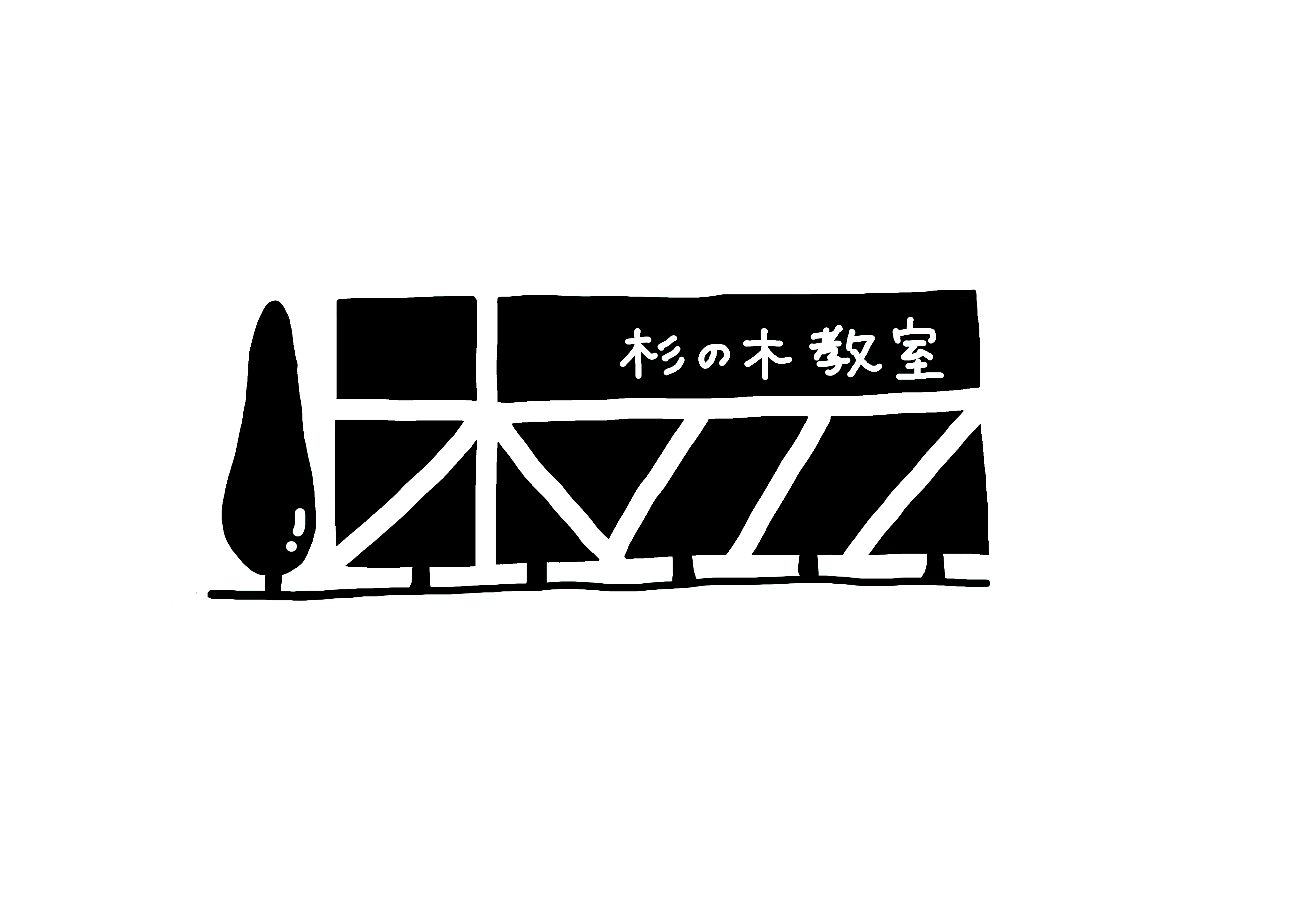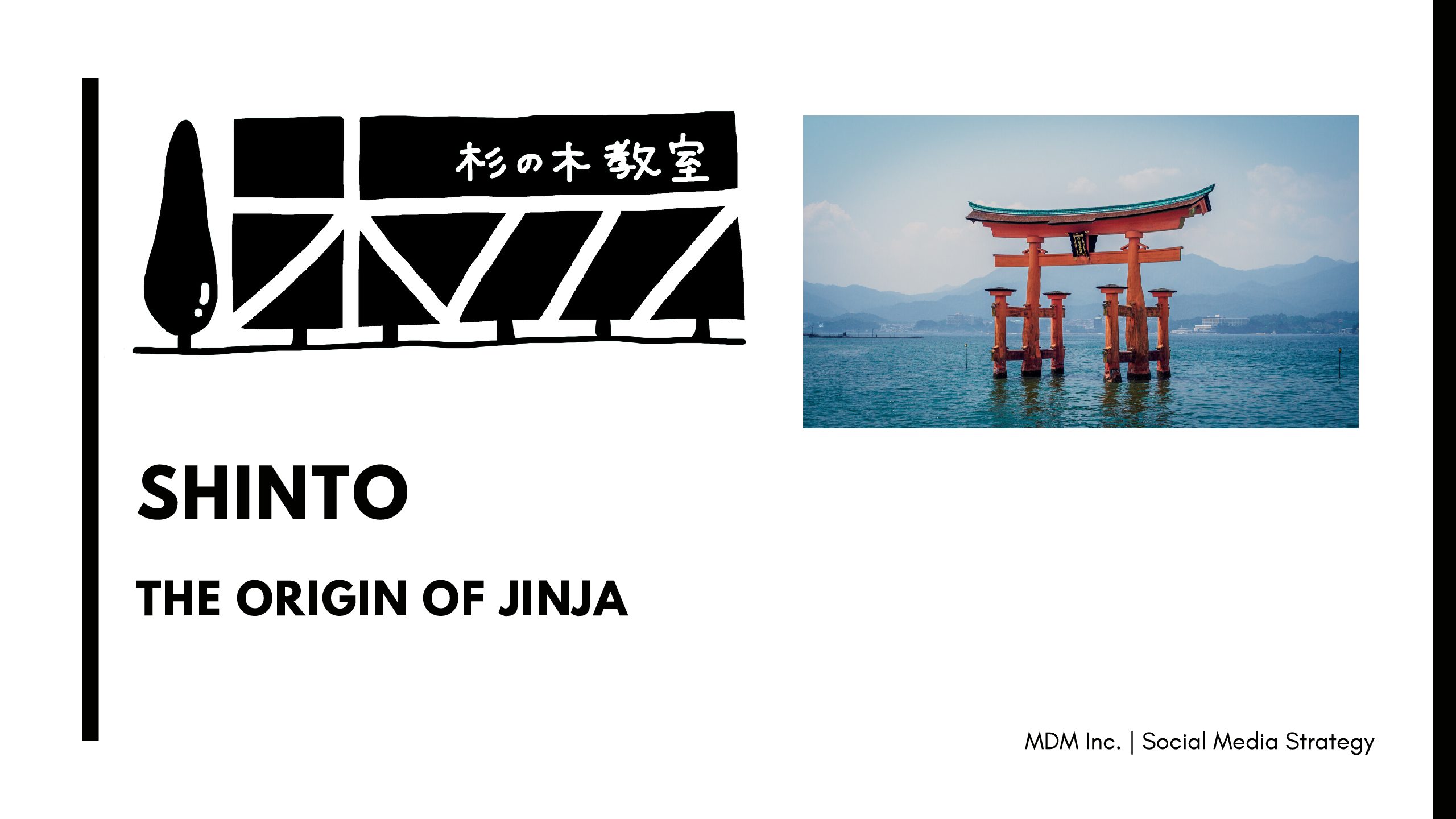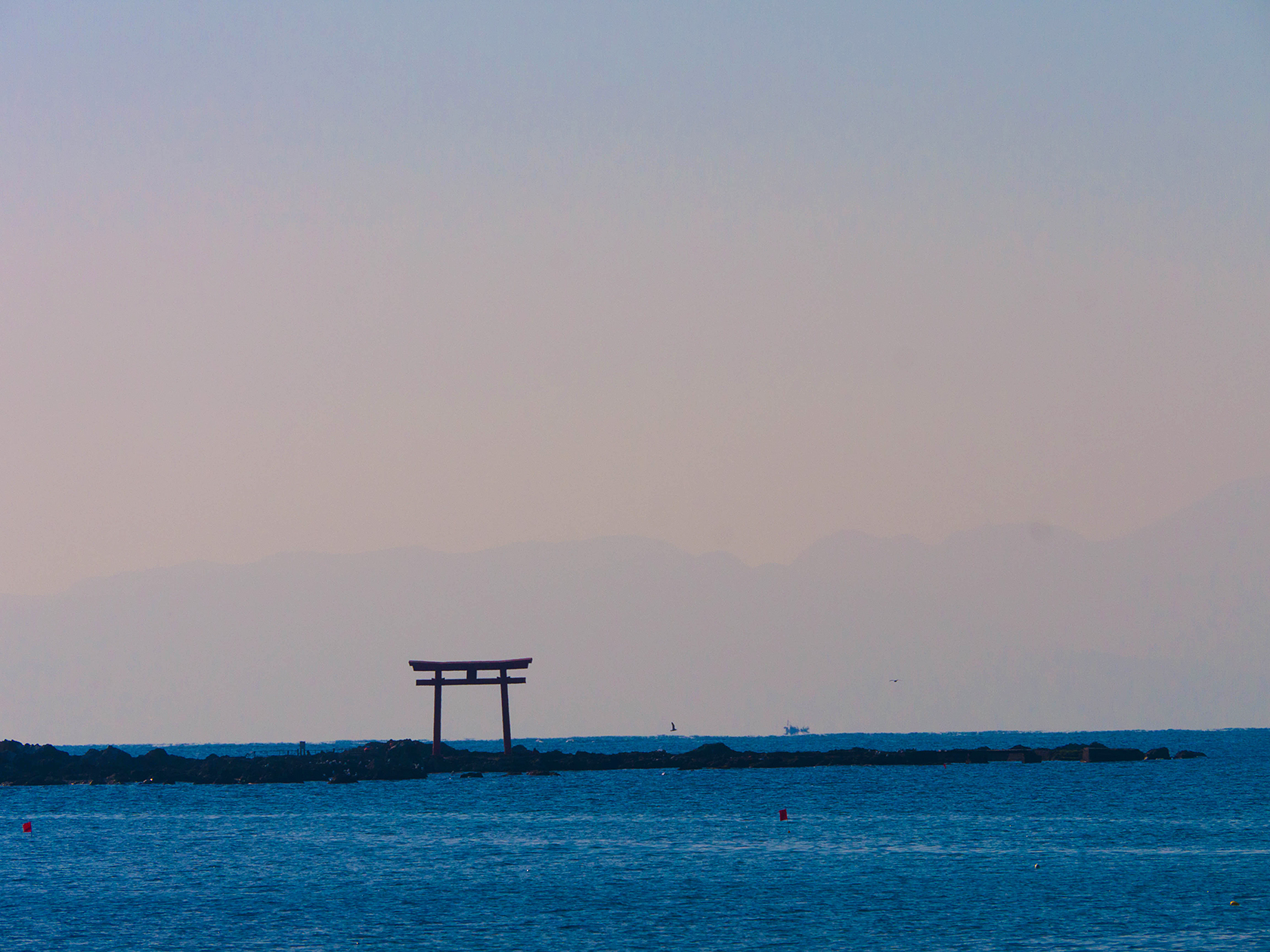When there was no shrine
Nowadays, Kami are enshrined in Shrine buildings in most cases.
In ancient times, however, Kami were invited in a tree or rock considered to be pure and sacred, each time people offered prayers, several time a year, in a mountain, or in a forest, or alongside a river.
A tree considered to be pure and sacred is called “Himorogi”.
And a rock is called “Iwakura”.
Inviting Kami is called “Kou-shin”.
Kou means “fall”, shin means “Kami”.
Having Kami returned is called “Shou-shin”.
Shou means “rise”, shin means Kami.
Himorogi
“Himorogi” is a temporary ritual facility.
A rope called “Shimenawa” is stretched all around, and an evergreen tree called “Sakaki” is set up in the center.
“Gohei” is attached to the “Sakaki”, and this is treated as “Yorishiro”.
“Gohei” is like a decoration on “Sakaki”.
In the old days, it was dedicated to Kami, but it has come to be used as a decoration and a tool of purification.
“Yorishiro” is objects and persons in which Kami is invited. “Himorogi” and “Iwakura” are kinds of “Yorishiro”.
Iwakura
“Iwakura” is a rock in which Kami is invited.
There are many kinds of “Iwakura” in a size and a shape.
You can see many characteristic ones.
Kou-shin Shou-sin
Inviting Kami is called “Kou-shin”.
Having Kami returned is called “Shou-shin”.
There is a manner to these.
At the festival place, there is “Yorishiro” such as “Himorogi” (a place where God temporarily dwells).
“Norito”( A message to Kami ) is read in small voice, and “Keihitsu”( voice of oh ) is done.
Appearance of the shrine
Originally rituals of prayer were performed outdoors.
Later, People started to set up permanent structures such as a roof or a hut to cover a ritual site in order to keep out rain and wind.
Thus, Kami became to be enshrined in a permanent shrine building.




コメント